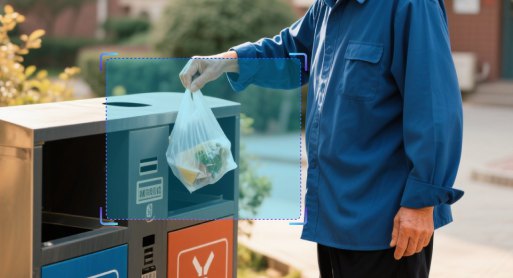
Floating White Plastic Debris Detection

Algorithm Introduction
Detecting floating white pollution (such as plastic bottles and plastic bags) on river surfaces, outputting detection bounding boxes and the proportion of event-related area to total frame area.
- ● Lighting conditions: Daytime with normal illumination
- ● Image requirements: Minimum image size of 960×540 pixels
Application Value
-

Urban Lakes
The algorithm can rapidly identify white trash such as plastic bottles and bags, locate them through detection frames, and calculate their proportion of the image area. This helps water authorities promptly identify the distribution of waterborne debris, guiding cleanup operations to preserve lake ecosystems. -

Coastal Zones
The algorithm scans floating white waste in nearshore waters, generating detection grid and coverage area data. This provides marine environmental protection agencies with a basis for assessing coastal pollution levels and formulating beach cleanup plans.
FAQ
-
Algorithm AccuracyAll algorithms published on the website claim accuracies above 90 %. However, real-world performance drops can occur for the following reasons:
(1) Poor imaging quality, such as
• Strong light, backlight, nighttime, rain, snow, or fog degrading image quality
• Low resolution, motion blur, lens contamination, compression artifacts, or sensor noise
• Targets being partially or fully occluded (common in object detection, tracking, and pose estimation)
(2) The website provides two broad classes of algorithms: general-purpose and long-tail (rare scenes, uncommon object categories, or insufficient training data). Long-tail algorithms typically exhibit weaker generalization.
(3) Accuracy is not guaranteed in boundary or extreme scenarios.
-
Deployment & InferenceWe offer multiple deployment formats—Models, Applets and SDKs.
Compatibility has been verified with more than ten domestic chip vendors, including Huawei Ascend, Iluvatar, and Denglin, ensuring full support for China-made CPUs, GPUs, and NPUs to meet high-grade IT innovation requirements.
For each hardware configuration, we select and deploy a high-accuracy model whose parameter count is optimally matched to the available compute power.
-
How to Customize an AlgorithmAll algorithms showcased on the website come with ready-to-use models and corresponding application examples. If you need further optimization or customization, choose one of the following paths:
(1) Standard Customization (highest accuracy, longer lead time)
Requirements discussion → collect valid data (≥1 000 images or ≥100 video clips from your scenario) → custom algorithm development & deployment → acceptance testing
(2) Rapid Implementation (Monolith:https://monolith.sensefoundry.cn/)
Monolith provides an intuitive, web-based interface that requires no deep AI expertise. In as little as 30 minutes you can upload data, leverage smart annotation, train, and deploy a high-performance vision model end-to-end—dramatically shortening the algorithm production cycle.






